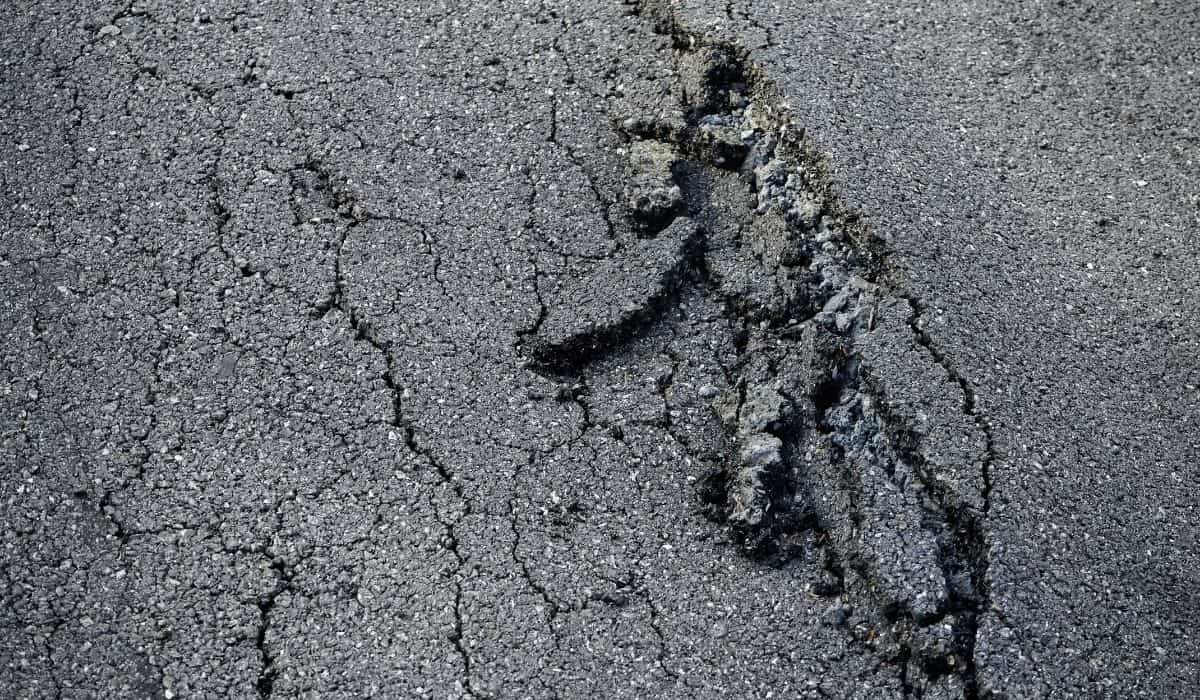Getting My A1 Professional Asphalt & Sealing Llc To Work
Getting My A1 Professional Asphalt & Sealing Llc To Work
Blog Article
A1 Professional Asphalt & Sealing Llc for Beginners
Table of ContentsFascination About A1 Professional Asphalt & Sealing LlcA1 Professional Asphalt & Sealing Llc Can Be Fun For AnyoneThe Definitive Guide to A1 Professional Asphalt & Sealing LlcWhat Does A1 Professional Asphalt & Sealing Llc Mean?Things about A1 Professional Asphalt & Sealing Llc

The oil in a vehicle engine is not just oil. It includes a variety of additives to boost the lorry's performance. These consist of polymers, thickness modifiers, warmth stabilizers, extra lubes, and put on ingredients. The REOB consists of all the ingredients that remained in the waste oil as well as the wear metals from the engine (primarily iron and copper).
However, by making many blends making use of various REOB samples and different asphalt binders, the variations largely can be balanced out. A number of States offered samples of recognized REOB structure to TFHRC scientists, who evaluated the examples to contrast the portion of added (understood) REOB to the located (evaluated) amount. The analyses showed a similar percentage of added and discovered REOB.
The 5-Second Trick For A1 Professional Asphalt & Sealing Llc
They received an overwhelming response. The TFHRC scientists analyzed 1,532 samples from 40 States, one Canadian district, and 2 Federal Lands Freeway divisions. They analyzed each sample twiceamounting to more than 3,000 analyses. None of those States realized that the asphalt they were getting had REOB. One State insisted its examples had no REOB.
Of the 1,532 samples evaluated, 12 percent had REOB, and some consisted of substantially high levels of it at 1020 percent. The highest degree was 34 percent in an example from Texas, which TxDOT had made use of in a patching substance. This screening likewise exposed the visibility of phosphoric acid in 11 percent of the examples, and 2 percent consisted of ground tire rubber.
2 years ago at TRB's annual meeting, the Federal scientists held an REOB workshop and presented the findings of their research laboratory assessments to a standing room-only crowd. Some companies do not particularly ban REOB, they do enforce physical tests that prevent its useeffectively a ban. Others do not outlaw it by spec, yet have arrangements with asphalt distributors to prevent the use of REOB
Some Known Factual Statements About A1 Professional Asphalt & Sealing Llc
A handful do permit REOB, some within particular limits. As an example, Ohio and Texas limit levels to less than 5 percent of the asphalt. To create a trustworthy examination method that all States can use, the TFHRC researchers established a round-robin test plan. The individuals are 11 State highway companies (Illinois, Massachusetts, Minnesota, Mississippi, Montana, North Carolina, Oklahoma, South Carolina, Texas, Vermont, and Wyoming), 2 independent screening laboratories, the Ministry of Transportation in Ontario, Queen's University in Ontario, and an Ontario paving specialist.
In overall, the scientists prepared and delivered 720 blends. The individuals are evaluating the examples individually using the guidelines supplied by the TFHRC scientists. The round-robin screening is virtually finished, and TFHRC remains in the process of accumulating the results. The outcome will be a suggested AASHTO test method that any kind of State can adopt and utilize (asphalt paving repairs).
The pavement with REOB, which is located 0.6 mile (1 kilometer) from the pavement without REOB, has similar subgrade, web traffic thickness, and climate. The segment of Highway655 with 5 to 10 percent REOB showed significant splitting. In this example, the presence of REOB was the recognized reason for breaking at a low temperatures.
"In our experience in copyright, even little amounts of 23 percent can be a problem." Likewise, an area of examination pavement in Minnesota (MN1-4) located to consist of REOB also cracked prematurely. The pavement done well for the first 3 to 4 years, however then started to break. This sidewalk is likewise based on low temperature levels.
The Ultimate Guide To A1 Professional Asphalt & Sealing Llc
The examinations were not considerable, yet they revealed that at levels of 6 percent or even more, the tensile toughness of the asphalt went down dramatically. At a level of 3.5 percent REOB, the variant in the physical test approaches was more than the impact of REOB. In reality, it was challenging for researchers to evaluate whether REOB existed.

One binder specification thought about is the difference between the low temperature level critical requirements temperature level for rigidity (S) in the bending beam rheometer and the bending beam rheometer creep incline (m-value) noted as Tcritical. TC = TC (S) TC (m-value). Analysis of this criterion is still recurring. 2 independent research study groups, one from AASHTO and the other from the Asphalt Institute, wrapped up that even more research is needed on the use of REOB in asphalt.
Formerly, all asphalt testing gauged engineering properties such as rigidity. These tests do not reveal what materials had been included to the asphalt.

Some Known Factual Statements About A1 Professional Asphalt & Sealing Llc
These results demonstrate there are weak points in the standard engineering testing methods that may be exploited. The manufacturer may have a financial benefit and the other item passes all the standard tests, but the item may not be useful to guaranteeing long-lasting efficiency. To resolve this issue and the expansion of brand-new asphalt ingredients and extenders, TFHRC is starting a study program to use portable spectroscopic gadgets, x-ray fluorescence spectroscopy, and Fourier transform infrared spectroscopy to enable evaluations to be performed in the field as opposed to needing to take samples back to the lab.
Report this page